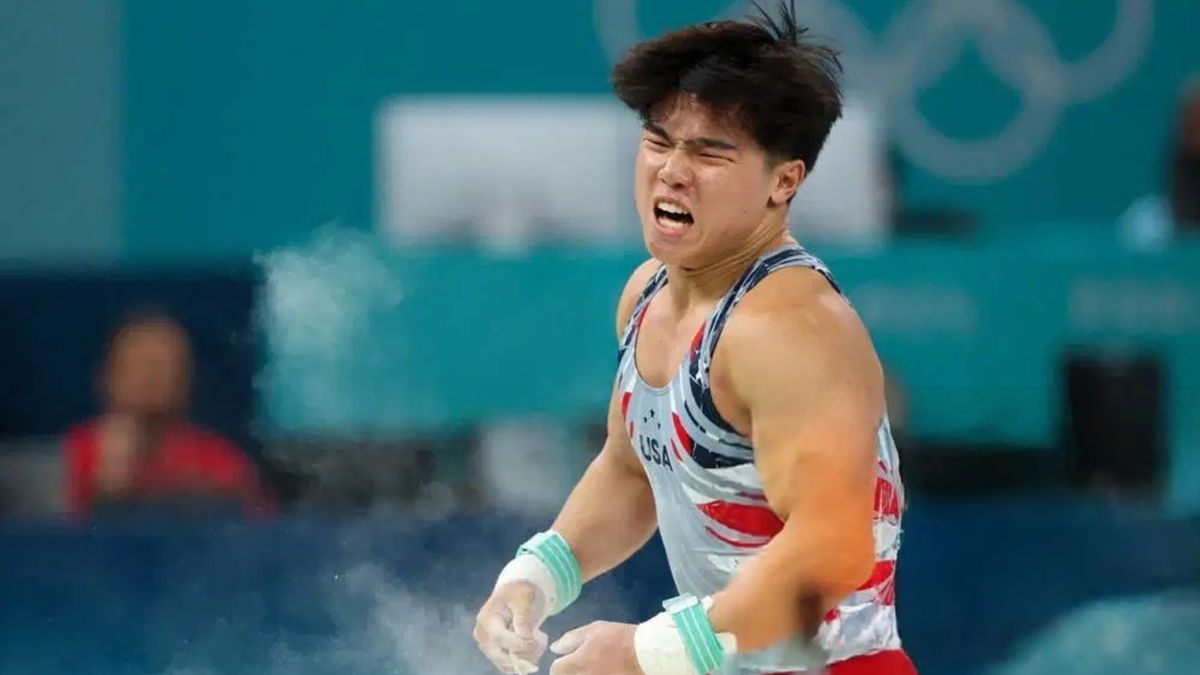
Imago
Credits: IMAGO

Imago
Credits: IMAGO
Asher Hong’s career ledger already reads like a veteran’s record book. An Olympic team bronze medalist in Paris last summer. Six NCAA individual titles across vault, parallel bars, still rings, and floor exercise. Two NCAA team championships with Stanford. The 2023 U.S. all-around champion and a World Championships team bronze medalist. Yet his latest accomplishment may be the most decisive: winning the U.S. men’s all-around gymnastics title in New Orleans by 7.465 points, the largest margin recorded under the Code of Points since its introduction in 2006. “One of our mottos is leave no doubt, and that’s what I wanted to do here today,” Hong said on NBC Sports.
Watch What’s Trending Now!
That margin eclipsed the previous record of 5.55 points set by Sam Mikulak in 2019 and even surpassed Simone Biles’s women’s mark of 6.55 in 2018. It was the sort of separation that not only secured Hong’s return to the top of the national podium but also underscored his position as a leader for the U.S. team heading toward the next World Championships. For those who have watched his evolution, it was the logical next step in a career built on mastering extreme difficulty and executing it under pressure.
Although Hong now commands international respect as one of the few gymnasts to perform the Ri Se Gwang vault, a backward, full twisting double somersault ranked among the sport’s most complex, his relationship with the apparatus began humbly. As an 8-year-old Level 6 competitor at the Houston National Invitational, he struggled to clear the vault table on a basic front handspring. “I remember running, hitting the springboard and then doing the front handspring, but then I didn’t make it over. So I had to walk (on my hands) to the end of the table and then kind of fall over, and I landed it. And the judge was so impressed with how I even got over the table, he gave me this gold dollar coin.” Those early moments, defined as much by improvisation as by form, set a foundation for his resourcefulness in competition.
ADVERTISEMENT
Now 21 and entering his junior year at Stanford, the Texas native has refined that raw determination into world-class execution. Vault remains a signature event, but Hong’s latest title was built on a complete program across six apparatuses over two days, totaling 170.02 points. His vaulting prowess—where “you have to have a very strong block and be able to get up in the air at least 10 or 15 feet,” as USA Gymnastics high performance director Brett McClure explained, anchors his all-around consistency. That combination of difficulty and reliability has become his calling card, one that can tilt team standings at global events.
For Hong, the symbolic value of a gold dollar coin has long since been replaced by the tangible pursuit of gold medals. His record-setting victory in New Orleans was not simply a national title. It was evidence of a gymnast capable of extending the United States’ presence on international podiums. The boy who once inched his way over a vault table is now setting margins that no one in his era has matched, and the next challenge lies not in clearing the apparatus but in redefining the heights to which he can take his sport.
ADVERTISEMENT
Asher Hong’s journey from Spider-Man dreams to vault supremacy under a coach’s steady hand
Tom Meadows remembers the early years with Asher Hong with unvarnished candor. “It (vault) was his worst. He was terrible,” he said, recalling a boy so undersized he struggled to clear the table. Meadows, who had once nicknamed him “Ping Pong Ball” because of his small frame and disproportionately large head, saw in Hong a determined child whose physical limitations disguised his eventual potential. What others regarded as an inevitable weakness became, under careful guidance, a technical foundation. Meadows chose patience over urgency, reinforcing strength and form until the years caught up with Hong’s ambition.

Reuters
Paris 2024 Olympics – Artistic Gymnastics – Men’s Team Victory Ceremony – Bercy Arena, Paris, France – July 29, 2024. Bronze medallist’s Stephen Nedoroscik, Paul Juda, Brody Malone, Frederick Richard and Asher Hong of United States celebrate on the podium with their medals. REUTERS/Hannah Mckay
That ambition had been stoked in an unexpected way. Long before national titles or Olympic contention, Hong was a child in motion after watching Tobey Maguire in Spider-Man. “I watched the Spider-Man movie, and I just couldn’t control myself in the house,” he recalled. His parents, unable to contain his climbing and leaping, enrolled him in a local gym, beginning a disciplined journey that would replace spontaneous acrobatics with refined skill. From the start, coaches noted that he approached training with an alertness rare for his age, not only practicing but also studying videos of elite performances.
ADVERTISEMENT
Meadows never pressed Hong to declare specific Olympic ambitions. Instead, there was an implicit understanding that each year would be measured by its progress. By the time Hong’s physique had matured, the vault, once his chief obstacle, had become an event of strategic value. The refinement of that skill, combined with his versatility across apparatuses, reflects the steady arc of a coach’s long-term vision and a gymnast’s enduring appetite for mastery. For Meadows, the process was not about predicting a ceiling, but ensuring that, when the right moment arrived, Hong would be prepared to meet it.
ADVERTISEMENT
ADVERTISEMENT
ADVERTISEMENT

